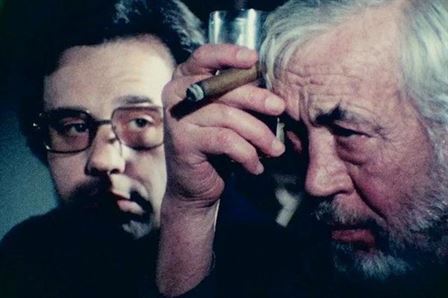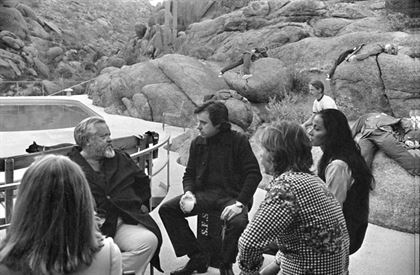After more than a decade of long self-imposed exile in Europe, legendary filmmaker Orson Welles returned to Hollywood in 1970, ending his hiatus with his brand new film, “The Other Side of the Wind.”
Production for this film spanned from 1970 to 1976, and editing took place during the 1980s. Dealing with the burden of legal and financial issues, Welles was never able to finish the film and passed away soon after.
Forty years later, those who originally worked on the movie, along with other producers and filmmakers who wished to see this picture available to the public, used Welles’ notes and his edited scenes to finally release the film on Netflix.
Welles tells the story of a movie director named Jake Hannaford, played by Academy Award winner John Huston, who returns from his time away in Europe to create a film also called “The Other Side of the Wind.” Although this film is not technically autobiographical, it is without a doubt extremely meta.
The film follows the last day of Jake’s life, which is also his 70th birthday, after he is tragically killed in a car accident. Jake invites producers, actors, press and friends to attend his birthday party and view his semi-completed final film. Jake is portrayed as a larger-than-life filmmaker, both loved and hated by those around him. The mystique created around Jake, along with the intimidating performance by Huston, results in a character that is so compelling and magnetic.
“The Other Side of the Wind” is shot in a sort of mockumentary fashion, being told through the cameras of the guests recording during the party. This style, although intriguing and exhilarating, can many times be jumpy and confusing.
I would like to think this was done artistically to show the anxiety of the party, but it might be a negative result of attempting to edit film 40 years after it was shot. Either way, it takes some time to follow the chaotic structure of the movie.
The other portion of the film revolves around the movie Jake shows to his party guests. Although the audience is not supposed to entirely understand this film, it was still very interesting to watch. The cinematography and use of colors in this film-within-a-film was gorgeous, and you can really feel Welles’ magic touch on it. Oja Kodar, who is credited as a co-writer, displays an almost hypnotizing performance, both as the character in Jake’s film, and as the actress in the party.

Peter Bogdanovich (left) and John Huston (right) in a scene from “The Other Side of the Wind.” Photo courtesy of Netflix
However, the dialogue can often times be hard to follow. Viewers need to actively listen and pay attention to what characters are saying to fully grasp the plot.
“The Other Side of the Wind” is not a film for casual moviegoers. It seems more fit for cinema fanatics or those who appreciate Welles and his work. If you are looking for a Netflix movie to enjoy on a Saturday night, I do not really recommend this movie.
This also brings me to the point of how I wish this film was not released on Netflix. There is a certain experience movieviewers go through when watching a film. I would hate to speak on behalf of Welles, but I do not think sitting on a couch is how he intended this movie to be enjoyed.
This film is a strange and dazzling piece that has life imitating art imitating life. “The Other Side of the Wind” acts as a mirror to the fascinating life of Welles, and it is a captivating ending to his cinematic career.



